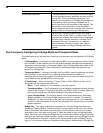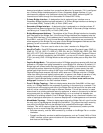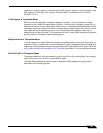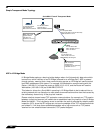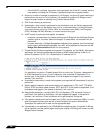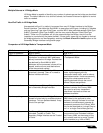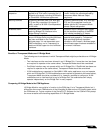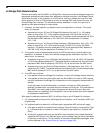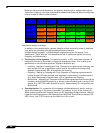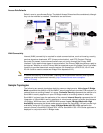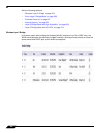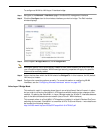
Network > Interfaces
198
SonicOS 5.8.1 Administrator Guide
Subnets supported Any number of subnets is supported.
Firewall Access Rules can be written to
control traffic to/from any of the subnets as
needed.
In its default configuration, Transparent
Mode only supports a single subnet (that
which is assigned to, and spanned from
the Primary WAN). It is possible to
manually add support for additional
subnets through the use of ARP entries
and routes.
Non-IPv4 Traffic All non-IPv4 traffic, by default, is bridged
from one Bridge-Pair interface to the
Bridge-Partner interface, unless disabled
on the Secondary Bridge Interface
configuration page. This includes IPv6
traffic, STP (Spanning Tree Protocol), and
unrecognized IP types.
Non IPv4 traffic is not handled by
Transparent Mode, and is dropped and
logged.
VLAN traffic VLAN traffic is passed through the L2
Bridge, and is fully inspected by the Stateful
and Deep Packet Inspection engines.
VLAN subinterfaces can be created and
can be given Transparent Mode Address
Object assignments, but the VLANs will be
terminated by the SonicWALL rather than
passed.
VLAN subinterfaces VLAN subinterfaces can be configured on
Bridge-Pair interfaces, but they will be
passed through the bridge to the Bridge-
Partner unless the destination IP address in
the VLAN frame matches the IP address of
the VLAN subinterface on the SonicWALL,
in which case it will be processed (e.g. as
management traffic).
VLAN subinterfaces can be assigned to
physical interfaces operating in
Transparent Mode, but their mode of
operation will be independent of their
parent. These VLAN subinterfaces can
also be given Transparent Mode Address
Object assignments, but in any event
VLAN subinterfaces will be terminated
rather than passed.
PortShield interfaces PortShield interfaces cannot be assigned to
either interface of an L2 Bridge Pair.
PortShield interfaces may be assigned a
Transparent Mode range.
Dynamic addressing Although a Primary Bridge Interface may be
assigned to the WAN zone, only static
addressing is allowable for Primary Bridge
Interfaces.
Although Transparent Mode employs the
Primary WAN as a master interface, only
static addressing is allowable for
Transparent Mode.
VPN support VPN operation is supported with one
additional route configured. See the “VPN
Integration with Layer 2 Bridge Mode”
section on page 258 for details.
VPN operation is supported with no special
configuration requirements.
DHCP support DHCP can be passed through a Bridge-
Pair.
Interfaces operating in Transparent Mode
can provide DHCP services, or they can
pass DHCP using IP Helper.
Routing and NAT Traffic will be intelligently routed in/out of
the L2 Bridge-Pair from/to other paths. By
default, traffic will not be NATed from one
Bridge-Pair interface to the Bridge-Partner,
but it can be NATed to other paths, as
needed. Custom routes and NAT policies
can be added as needed.
Traffic will be intelligently routed from/to
other paths. By default, traffic will not be
NATed from/to the WAN to/from
Transparent Mode interface, but it can be
NATed to other paths, as needed. Custom
routes and NAT policies can be added as
needed.



